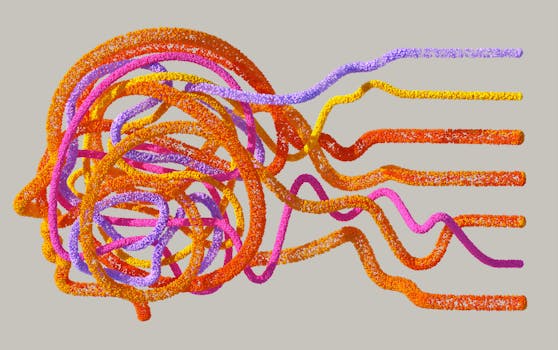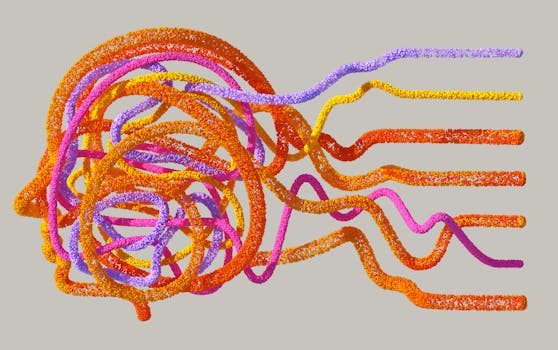Understanding the Fundamentals: Machine Learning vs. Deep Learning
Machine learning and deep learning are two terms that are often used interchangeably, but they are not the same thing. While both are subsets of artificial intelligence (AI), they have distinct differences in their approach and capabilities. In this article, we will delve into the fundamentals of machine learning and deep learning, and explore the key differences between the two.
To understand the difference between machine learning and deep learning, we must first understand what they are. Machine learning is a method of teaching computers to learn and make decisions without being explicitly programmed. It involves feeding large amounts of data into algorithms, which then use statistical techniques to identify patterns and make predictions. This allows the computer to improve its performance over time without human intervention.
On the other hand, deep learning is a subset of machine learning that uses artificial neural networks to mimic the way the human brain processes information. These networks are made up of layers of interconnected nodes, each performing a specific task. The data is fed into the network, and the connections between the nodes are adjusted based on the output, allowing the network to learn and improve its performance.
One of the key differences between machine learning and deep learning is the level of complexity. Machine learning algorithms are relatively simple and can only handle a limited amount of data. They are suitable for tasks such as image recognition, speech recognition, and recommendation systems. Deep learning, on the other hand, can handle much larger and more complex datasets, making it suitable for tasks such as natural language processing, autonomous driving, and medical diagnosis.
Another difference between the two is the amount of data required for training. Machine learning algorithms require a significant amount of labeled data to learn and make accurate predictions. Labeled data means that each data point is tagged with the correct answer, making it easier for the algorithm to learn. Deep learning, on the other hand, can learn from unlabeled data, making it more efficient and less dependent on human input.
The level of human involvement is also a differentiating factor between machine learning and deep learning. In machine learning, humans play a crucial role in selecting the features and algorithms to use, as well as labeling the data. This requires a certain level of expertise and domain knowledge. In deep learning, the network automatically learns the features and patterns from the data, reducing the need for human intervention.
One of the most significant advantages of deep learning over machine learning is its ability to handle unstructured data. Unstructured data refers to data that does not have a predefined format, such as images, videos, and text. Machine learning algorithms struggle with unstructured data, as they require a structured format to make predictions. Deep learning, on the other hand, can learn from unstructured data, making it more versatile and suitable for a wide range of applications.
Another key difference between machine learning and deep learning is their performance. Machine learning algorithms have a limit to their performance, and they reach a point where adding more data does not improve their accuracy. Deep learning, on the other hand, has shown to have superior performance in tasks such as image and speech recognition, surpassing human-level accuracy.
In conclusion, while machine learning and deep learning are both subsets of AI, they have distinct differences in their approach and capabilities. Machine learning is suitable for simpler tasks and requires a significant amount of labeled data and human intervention. Deep learning, on the other hand, can handle more complex tasks, learn from unstructured data, and has shown to have superior performance. Both have their strengths and weaknesses, and understanding these differences is crucial in choosing the right approach for a specific task.
Real-World Applications: How Machine Learning and Deep Learning Differ

Machine learning and deep learning are two terms that are often used interchangeably, but they are not the same thing. While both are subsets of artificial intelligence (AI), they have distinct differences in their approaches and applications. In this article, we will explore the difference between machine learning and deep learning, specifically in real-world applications.
Machine learning is a method of teaching computers to learn and make decisions without being explicitly programmed. It involves feeding large amounts of data into an algorithm, which then uses statistical techniques to identify patterns and make predictions. This process is often referred to as “training” the algorithm. The more data the algorithm is trained on, the more accurate its predictions become.
One of the most common real-world applications of machine learning is in the field of finance. Banks and financial institutions use machine learning algorithms to analyze large amounts of data and make decisions on loan approvals, credit risk assessments, and fraud detection. These algorithms can quickly process vast amounts of data and identify patterns that humans may not be able to detect. This not only saves time and resources but also improves the accuracy of decision-making.
Another real-world application of machine learning is in the healthcare industry. With the increasing amount of medical data being generated, machine learning algorithms can be used to analyze this data and assist in medical diagnosis and treatment. For example, machine learning algorithms can be trained on medical images to identify patterns and assist doctors in diagnosing diseases such as cancer. This can potentially lead to earlier detection and more effective treatment.
On the other hand, deep learning is a subset of machine learning that uses artificial neural networks to learn and make decisions. These neural networks are modeled after the structure and function of the human brain, with layers of interconnected nodes that process information. Deep learning algorithms are able to learn from large amounts of data and make complex decisions, similar to how the human brain works.
One of the most significant differences between machine learning and deep learning is the amount of data required for training. While machine learning algorithms can be trained on a relatively small amount of data, deep learning algorithms require a vast amount of data to achieve high levels of accuracy. This is because deep learning algorithms have a more complex structure and require more data to learn and make accurate predictions.
One of the most well-known real-world applications of deep learning is in the field of image and speech recognition. Companies like Google and Facebook use deep learning algorithms to accurately identify and tag people in photos and videos. This technology has also been used in self-driving cars, where deep learning algorithms can recognize and interpret traffic signs and signals.
Another real-world application of deep learning is in natural language processing (NLP). Deep learning algorithms can be trained on large amounts of text data and learn to understand and generate human language. This has led to advancements in virtual assistants like Siri and Alexa, which can understand and respond to human speech.
In conclusion, while machine learning and deep learning are both subsets of AI, they have distinct differences in their approaches and applications. Machine learning is more suitable for tasks that require less data and can make accurate predictions based on statistical techniques. On the other hand, deep learning is better suited for complex tasks that require a vast amount of data and can make decisions similar to the human brain. Both have a wide range of real-world applications, and as technology continues to advance, we can expect to see even more innovative uses for these AI techniques.
The Future of AI: Exploring the Advancements of Machine Learning and Deep Learning
Artificial intelligence (AI) has been a buzzword in the tech industry for quite some time now. With the rapid advancements in technology, AI has become a reality and is being integrated into various aspects of our lives. One of the key components of AI is machine learning (ML) and its subset, deep learning (DL). While these terms are often used interchangeably, they are not the same. In this article, we will explore the difference between machine learning and deep learning and how they are shaping the future of AI.
Machine learning is a branch of AI that focuses on developing algorithms and statistical models that enable computers to learn and make predictions or decisions without being explicitly programmed. In simpler terms, it is the process of teaching a computer to learn from data and improve its performance over time. This is achieved through the use of various techniques such as supervised learning, unsupervised learning, and reinforcement learning.
Supervised learning involves training a model on a labeled dataset, where the desired output is already known. The model then uses this information to make predictions on new data. This technique is commonly used in applications such as image and speech recognition. Unsupervised learning, on the other hand, involves training a model on an unlabeled dataset and allowing it to find patterns and relationships on its own. This technique is useful in tasks such as clustering and anomaly detection. Reinforcement learning is a trial-and-error approach where the model learns by interacting with its environment and receiving rewards or punishments for its actions.
Deep learning, on the other hand, is a subset of machine learning that uses artificial neural networks (ANNs) to learn from data. ANNs are inspired by the structure and function of the human brain and consist of multiple layers of interconnected nodes. Each node performs a simple mathematical operation and passes the result to the next layer. This process continues until the desired output is achieved. The more layers a network has, the deeper it is, hence the term “deep learning.”
One of the key differences between machine learning and deep learning is the level of human involvement required. In machine learning, humans need to provide the model with the features or attributes to learn from. These features are carefully selected and engineered by data scientists, making the process more time-consuming and labor-intensive. In deep learning, however, the model learns the features on its own, eliminating the need for human intervention. This makes deep learning more efficient and scalable, as it can handle large and complex datasets without the need for feature engineering.
Another difference between the two is the type of data they can handle. Machine learning models are better suited for structured data, where the features are well-defined and organized. Deep learning, on the other hand, excels in handling unstructured data, such as images, videos, and text. This is because ANNs can learn from raw data without the need for preprocessing or feature extraction.
The applications of machine learning and deep learning are vast and diverse. In the healthcare industry, machine learning is being used to analyze medical images and assist in disease diagnosis. Deep learning, on the other hand, is being used to develop chatbots that can communicate with patients and assist in triaging. In the finance sector, machine learning is used for fraud detection and risk assessment, while deep learning is used for stock market prediction. In the transportation industry, machine learning is used for route optimization, while deep learning is used for self-driving cars.
In conclusion, while machine learning and deep learning are both branches of AI, they have distinct differences in their approach and capabilities. Machine learning is more human-driven and better suited for structured data, while deep learning is more automated and excels in handling unstructured data. As technology continues to advance, we can expect to see more applications of both machine learning and deep learning, shaping the future of AI and revolutionizing various industries.



